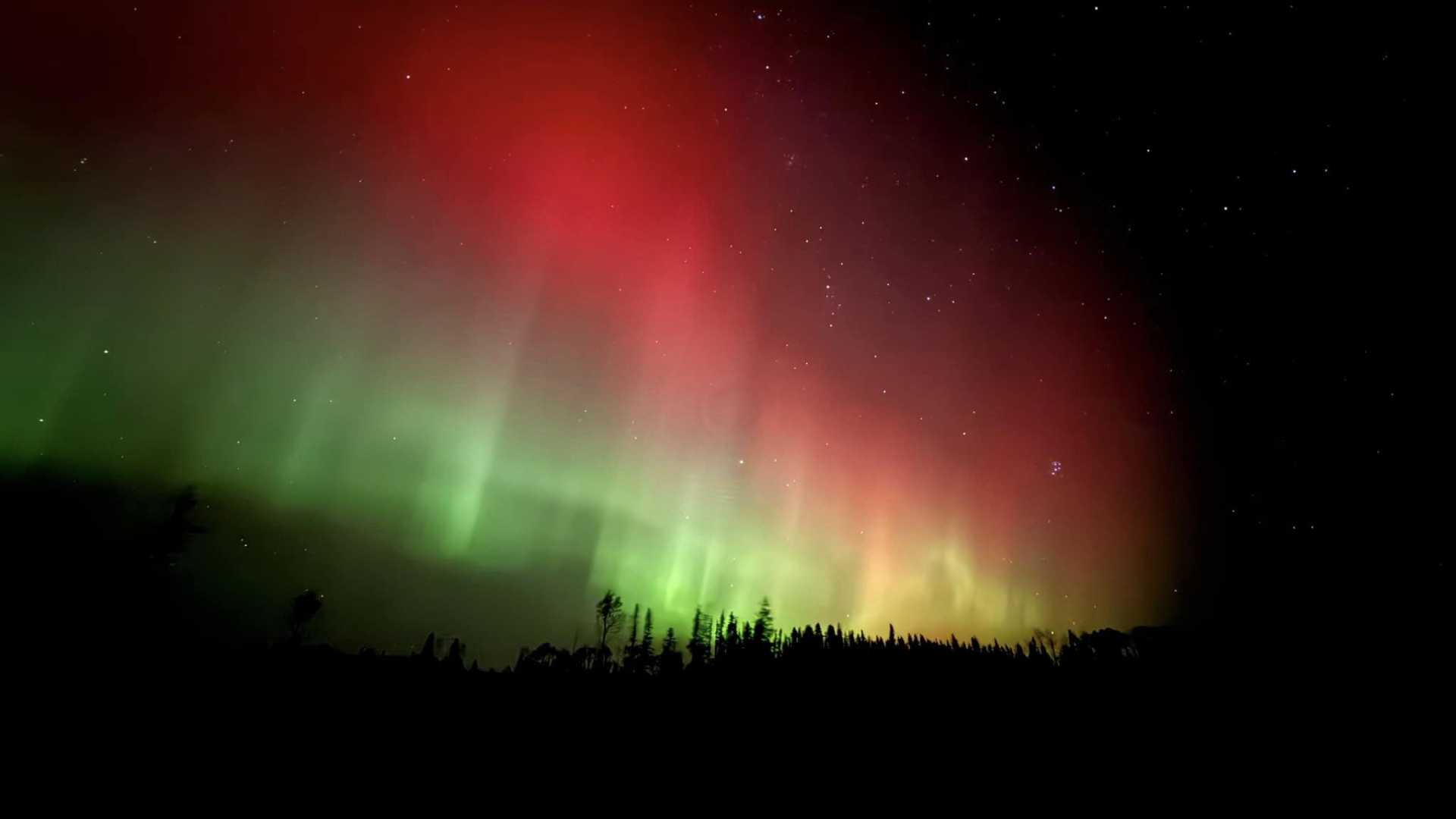News
Spectacular Display of Northern Lights Observed Across North America

THUNDER BAY — A remarkable display of the northern lights illuminated the sky on Sunday night, capturing the attention of spectators across North America as the lights approached the peak of their 11-year cycle. This vivid display, noted for an unusual prevalence of red hues, lit up the skies southwest of Thunder Bay, Ontario.
Local photographers and amateur astronomers reported a particularly intense aurora, attributed to recent solar activity. Al Stecky, a photo enthusiast from Thunder Bay and a frequent contributor to the Thunder Bay Starchasers Facebook group, mentioned the rare appearance of red in the aurora, which typically signifies a stronger geomagnetic storm. “The reds are very rare,” Stecky stated. “Some people were watching last night, and said the whole sky turned red for them,” he recounted.
Experts had forecast a notably phenomenal display from October 4 to 6, following two solar flares that erupted the previous week. Initial expectations, however, were met with disappointment until the intensified show unfolded on Sunday night. “We usually get a prediction from the National Oceanic and Atmospheric Administration in the US a couple of days ahead,” Stecky explained, “but nothing happened until Sunday night when we got the tail end of one of the solar storms.”
Recently observed solar flares are reportedly among the strongest witnessed in the past two to three decades. These flares are part of a complex interplay of solar weather patterns, with waves and ripples stemming from the sun potentially impacting Earth. “It’s such a big, big universe,” Stecky mused, “…the solar storms… if we get caught between a wave, we miss the storm. If we get the wave right on us, we get the storm.”
A similar phenomenon was visible across other parts of North America, including as far south as Oregon and Pennsylvania, thanks to two recent solar flares accompanied by coronal mass ejections. The National Oceanic and Atmospheric Administration (NOAA) reported that these solar activities are likely to increase as the sun approaches the peak of its 11-year solar cycle. During this period, heightened electromagnetic activity and sunspots are expected to occur, potentially leading to more frequent northern lights displays across lower latitude regions than is usually expected.












